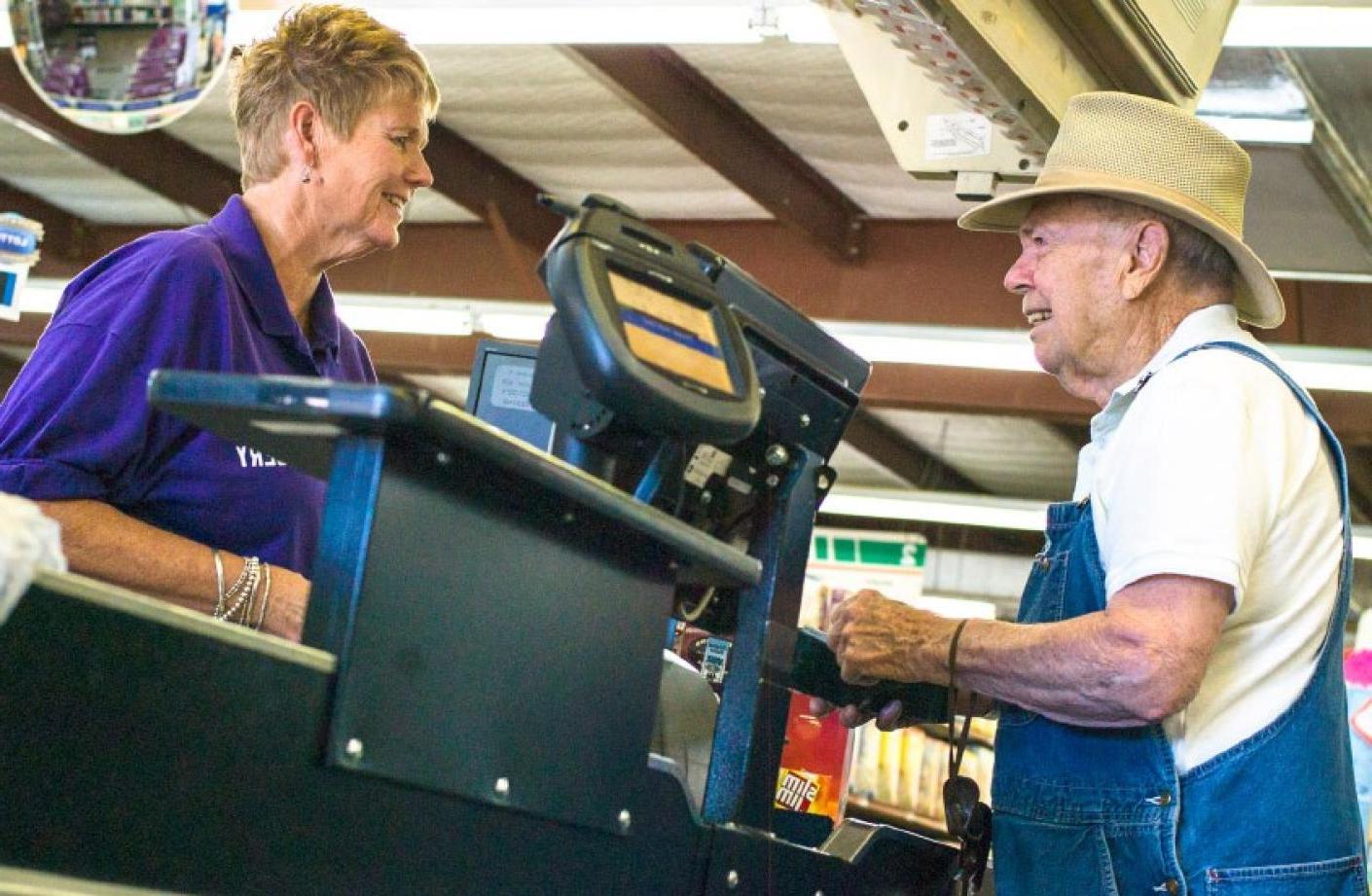By serving Coloradans who have less power, privilege and income, and by prioritizing Coloradans of color, we keep equity at the heart of our work to bring health in reach.

Walsh Grocery Co-Opts the Future
Eight years in now with its bold experiment in food collectivism, the small southeastern plains town of Walsh can brag that it was doing the “shared economy” thing since before Uber was nada.
From the brink of losing its only grocery store in 2006, the Walsh Community Grocery Store has recovered to the point where mundane challenges are a sign of success. Cases in point: A hodgepodge of antiquated air conditioners were recently replaced for $30,000, paid for with accumulated capital funds set aside from normal operations. A similar effort this year should help put to final rest a series of in-store freezers that generations of repairmen have kept running since 1951.
Other Colorado towns should consider sending ambassadors to Walsh for knowledge – a faltering chain of grocery stores put more towns like Akron and Walden at risk of losing their key shopping sites.
Advocates for rural health, economic development and community nutrition have happily applauded the success of Walsh’s community experiment. If the store had stayed closed after previous owners couldn’t make it in 2006, residents would have had to drive dozens of miles for the same produce, freshly butchered meat and other goods. The town of a few hundred would also have lost its primary hub for conversation, news, institutional supply – not to mention a physical goal for elderly residents who might otherwise stay home.
To restock the store and act as a down payment on economic development loans, hundreds of residents bought “shares” in the store for $50 each. That buy-in also encouraged them to protect their investment through spending their food budgets at the store.
Instead of dwindling, the community spirit seems to build each year, according to store bookkeeper Helen Mills. The store’s customer appreciation day in 2014 served 368 hot dogs – in a town with a population of 400. Along the way, Walsh’s early push at collective impact has been profiled from The Denver Post to USA Today, from People magazine to National Public Radio.
Store managers have to be creative in a place where margins are so thin. “It’s tough when Walmart can sell it for cheaper than we can even buy it,” Mills said.
“It’s a game every week to know how much everybody wants of blueberries or strawberries. We don’t normally get turnips in, but if somebody wants some, we’ll buy a case and try to sell half a case to the nursing home,” she said. “If we have leftover peppers and onions in produce, we can chop them up and sell them at the butcher counter for fajita mix. Too many cucumbers left? We can use more of them in salads.”
The store also doesn’t hesitate to put responsibility on its customer-owners. If you’re planning on canning strawberry jam, store employees warn, don’t walk in and snatch up all 12 pints sitting on the produce shelves. “Let us know and we can order ahead so other people can have some, too,” Mills said. “If you need 100 hamburgers for a party, let us know and we’ll order extra beef. We have almost everyone trained now that if they need something, we can get it for them on Thursday’s delivery day.”
“We try to focus on healthy foods,” said board chair and local farmer Clarence Jones. “Gluten-free, sugar-free – if someone wants it we’ll try to get it. Senior Citizen Day is Wednesday, and we give a 10 percent discount – big box chains can’t do that. And the seniors love it – they save their list for Wednesday, and then they shop their drawers off, and it becomes a social hub. People are talking with each other.”
That positive drawing power of food – often neglected in society’s anxiety over obesity rates – has been proven over and over again in Walsh, residents said.
“It’s an essential part of the community,” Jones said of the store. “It’s been more of a success than we ever thought it would be. I didn’t even realize how important it was until we got deep into it.”
Watch the town of Walsh gather at the grocery store for a story of preserving good health.
This article was originally published in the Fall 2014 issue of Health Elevations.
